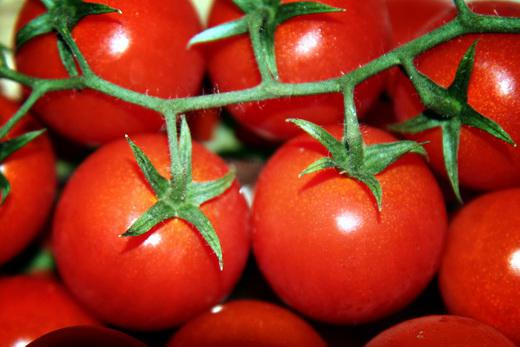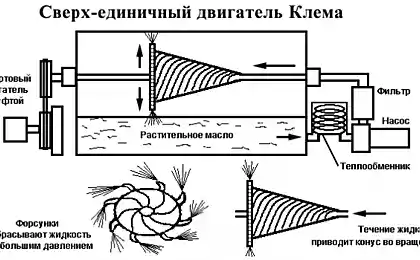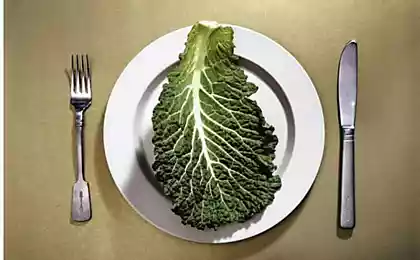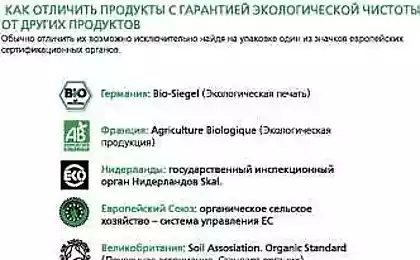919
Artificial products
Remember the stories of science fiction of the plastic mess, so here we have lived to see this happy day - now artificial products everywhere.
In the USSR extensive research on protein PPI began in 60-70s. on the initiative of academician Nesmeyanov the Institute of Organoelement Compounds (INEOS), USSR Academy of Sciences and developed in three main directions:
- Development of cost-effective methods of producing isolated proteins, as well as individual amino acids and mixtures of plant, animal and microbial materials;
- Development of methods for structuring of proteins and their complexes - IPP polysaccharides imitating the structure and form of traditional foods;
- The study of natural food odors and artificial re-creation of their compositions.
The developed methods for obtaining purified proteins and mixtures of amino acids turned out to be universal for all types of raw materials.
Odor in modern technique studied by GLC and artificially recreated from the same components as in natural foods.

Synthetic or artificial caviar
Product surrogate. It is designed to replace expensive and rare delicacy. The very first synthetic caviar was produced in the Soviet Union. In the 70 years of the products dramatically disappeared from the shelves, and those that could be obtained, cost indecently expensive. While the modeling of various protein compounds considered promising branch of science.
Develop artificial caviar was suggested organic chemist Academician AN Nesmeyanov. First eggs are made only on the basis of gelatin and eggs. Later we started to produce caviar-based gelling agents, such as algae.

Artificial eggs
According to a Hong Kong newspaper Ming Pao, employees of commercial and industrial management came to check on the received signal to the wholesale seller of eggs, who said he bought the eggs from Liaoning Province.
The inspectors reported that raw yolk and white of eggs, you can individually take the hand and they do not spread, they have increased elasticity. When eating these eggs, you can feel a strange taste.
One of the representatives of the egg business on condition of anonymity, told that the shell of artificial eggs made of calcium carbonate, and the yolk and white of the other chemical components. If you long to eat it, you can develop multiple sclerosis, dementia and other diseases.

Artificial meat.
In the USSR, artificial meat, suitable for all types of cooking, is produced by extrusion (forcing through a forming device) and wet spinning of protein to convert it into fibers, which are then assembled into bundles, washed, impregnated gluing weight (gelling agents), pressed and cut into pieces.
For the first time the Dutch scientists from the University of Eindhoven managed to grow artificial meat. Geneticists believe that a piece of pork out of the tube will result in a food revolution, pigs and calves people will breed for aesthetic reasons, and meat for meatballs to increase formations in the laboratory from a single cell.
It is possible, in a century or two high school student reads textbook on history: "In those days, when the potatoes are growing out of the ground, and the meat - on the sides of the cows, more than a billion people in the world suffering from hunger." Today, scientists - and genetics, and farmers, and food technologists - recognize that hunger will not be able to win with the help of classical crops and livestock.

Crab sticks
Ideally, the technology of production of surimi looks. Fish meat is cut finely and thoroughly rinsed in cold water. Then the weight was added sorbitol, salt and polyphosphates (this is done to obtain a jelly-like consistency surimi). Next surimi cook steamed, resulting in a dense white mass, devoid of characteristic raw fish specific smell and taste. After that surimi mixed with other components (starch, sugar, crab extract, spices, flavorings and colorings) and is formed from the resulting mass of crab sticks. It - ideally. But everything is really going on?

Sausage
The most common way to replace meat in sausage - is to add soy protein instead. Soya - is an ordinary white powder. Mix it with water, and he turns to mush, which can salt the pepper, tint and added to sausage instead myasa.Osnovnoe property of soy protein - absorb water, swell and increase yield. The more water can absorb protein, the better it is. According to the degree of hydration (moisture absorption) soy protein is divided into three types: soy flour, soy isolate and soy concentrate. Now almost all the meat-packing plants have switched to concentrate, though it is more expensive, but it absorbs all the more water.
Many companies use instead of meat so called MDM - a kind of substance, made from the bones with some meat. Under the pressure is converted into something similar to the sauce and use instead of meat.
Some companies use a curious German additive - carrot fiber. This fiber, as well as soybeans, has profitable for producers of sausage ability to absorb moisture. Its safely pour into sausage meat, pour the water and it swells, increasing several times the weight of this final produktsii.Pri no color and smell of the fiber is not. And there was no harm in contrast to the genetically modified soybeans health shall not be: in fact, it is generally not absorbed by the body, but as its manufacturers claim, is necessary for the good performance of the large intestine.

Chips,
noodles, rice, and other non-meat unground products prepared from mixtures of the proteins with natural nutrients and gelling agents (alginate, pectin, starch). Not yielding organoleptic properties of the corresponding natural products, these APIs 5-10 times superior to their protein content, and have improved processing characteristics.

Artificial milk
UK experiments started production of artificial milk and cheese from the green leaves of plants
8. Artificial honey produced in factories from beet or cane sugar, corn, juice of watermelons, melons and other sugary substances. Artificial honey does not have enzymes and has no odor, characteristic of natural. When adding artificial honey at least a small amount of natural honey, he will have a faint odor and contain small amounts of enzymes.

Juices
Sometimes manufacturers added to juices chemical dyes, thickeners, flavorings and other. For example, there are cases where some "chemical" food for the thickness added to the juice of wallpaper glue or starch. As recognized by domestic producers of juices, today no company makes a real juice with pulp. At best, it adds grated dried fruit, at worst - chemical simulators.

Greenhouse tomatoes
In modern greenhouse tomatoes are grown in soil, and mineral vatah serving droplets of the liquid solution containing all the necessary minerals to the plant, which in the normal life of the plant is taken from the earth.
Thus the modern forms of artificial greenhouse tomato liquid, which he served in the roots.
via

Source:
In the USSR extensive research on protein PPI began in 60-70s. on the initiative of academician Nesmeyanov the Institute of Organoelement Compounds (INEOS), USSR Academy of Sciences and developed in three main directions:
- Development of cost-effective methods of producing isolated proteins, as well as individual amino acids and mixtures of plant, animal and microbial materials;
- Development of methods for structuring of proteins and their complexes - IPP polysaccharides imitating the structure and form of traditional foods;
- The study of natural food odors and artificial re-creation of their compositions.
The developed methods for obtaining purified proteins and mixtures of amino acids turned out to be universal for all types of raw materials.
Odor in modern technique studied by GLC and artificially recreated from the same components as in natural foods.

Synthetic or artificial caviar
Product surrogate. It is designed to replace expensive and rare delicacy. The very first synthetic caviar was produced in the Soviet Union. In the 70 years of the products dramatically disappeared from the shelves, and those that could be obtained, cost indecently expensive. While the modeling of various protein compounds considered promising branch of science.
Develop artificial caviar was suggested organic chemist Academician AN Nesmeyanov. First eggs are made only on the basis of gelatin and eggs. Later we started to produce caviar-based gelling agents, such as algae.

Artificial eggs
According to a Hong Kong newspaper Ming Pao, employees of commercial and industrial management came to check on the received signal to the wholesale seller of eggs, who said he bought the eggs from Liaoning Province.
The inspectors reported that raw yolk and white of eggs, you can individually take the hand and they do not spread, they have increased elasticity. When eating these eggs, you can feel a strange taste.
One of the representatives of the egg business on condition of anonymity, told that the shell of artificial eggs made of calcium carbonate, and the yolk and white of the other chemical components. If you long to eat it, you can develop multiple sclerosis, dementia and other diseases.

Artificial meat.
In the USSR, artificial meat, suitable for all types of cooking, is produced by extrusion (forcing through a forming device) and wet spinning of protein to convert it into fibers, which are then assembled into bundles, washed, impregnated gluing weight (gelling agents), pressed and cut into pieces.
For the first time the Dutch scientists from the University of Eindhoven managed to grow artificial meat. Geneticists believe that a piece of pork out of the tube will result in a food revolution, pigs and calves people will breed for aesthetic reasons, and meat for meatballs to increase formations in the laboratory from a single cell.
It is possible, in a century or two high school student reads textbook on history: "In those days, when the potatoes are growing out of the ground, and the meat - on the sides of the cows, more than a billion people in the world suffering from hunger." Today, scientists - and genetics, and farmers, and food technologists - recognize that hunger will not be able to win with the help of classical crops and livestock.

Crab sticks
Ideally, the technology of production of surimi looks. Fish meat is cut finely and thoroughly rinsed in cold water. Then the weight was added sorbitol, salt and polyphosphates (this is done to obtain a jelly-like consistency surimi). Next surimi cook steamed, resulting in a dense white mass, devoid of characteristic raw fish specific smell and taste. After that surimi mixed with other components (starch, sugar, crab extract, spices, flavorings and colorings) and is formed from the resulting mass of crab sticks. It - ideally. But everything is really going on?

Sausage
The most common way to replace meat in sausage - is to add soy protein instead. Soya - is an ordinary white powder. Mix it with water, and he turns to mush, which can salt the pepper, tint and added to sausage instead myasa.Osnovnoe property of soy protein - absorb water, swell and increase yield. The more water can absorb protein, the better it is. According to the degree of hydration (moisture absorption) soy protein is divided into three types: soy flour, soy isolate and soy concentrate. Now almost all the meat-packing plants have switched to concentrate, though it is more expensive, but it absorbs all the more water.
Many companies use instead of meat so called MDM - a kind of substance, made from the bones with some meat. Under the pressure is converted into something similar to the sauce and use instead of meat.
Some companies use a curious German additive - carrot fiber. This fiber, as well as soybeans, has profitable for producers of sausage ability to absorb moisture. Its safely pour into sausage meat, pour the water and it swells, increasing several times the weight of this final produktsii.Pri no color and smell of the fiber is not. And there was no harm in contrast to the genetically modified soybeans health shall not be: in fact, it is generally not absorbed by the body, but as its manufacturers claim, is necessary for the good performance of the large intestine.

Chips,
noodles, rice, and other non-meat unground products prepared from mixtures of the proteins with natural nutrients and gelling agents (alginate, pectin, starch). Not yielding organoleptic properties of the corresponding natural products, these APIs 5-10 times superior to their protein content, and have improved processing characteristics.

Artificial milk
UK experiments started production of artificial milk and cheese from the green leaves of plants
8. Artificial honey produced in factories from beet or cane sugar, corn, juice of watermelons, melons and other sugary substances. Artificial honey does not have enzymes and has no odor, characteristic of natural. When adding artificial honey at least a small amount of natural honey, he will have a faint odor and contain small amounts of enzymes.

Juices
Sometimes manufacturers added to juices chemical dyes, thickeners, flavorings and other. For example, there are cases where some "chemical" food for the thickness added to the juice of wallpaper glue or starch. As recognized by domestic producers of juices, today no company makes a real juice with pulp. At best, it adds grated dried fruit, at worst - chemical simulators.

Greenhouse tomatoes
In modern greenhouse tomatoes are grown in soil, and mineral vatah serving droplets of the liquid solution containing all the necessary minerals to the plant, which in the normal life of the plant is taken from the earth.
Thus the modern forms of artificial greenhouse tomato liquid, which he served in the roots.
via

Source:
























